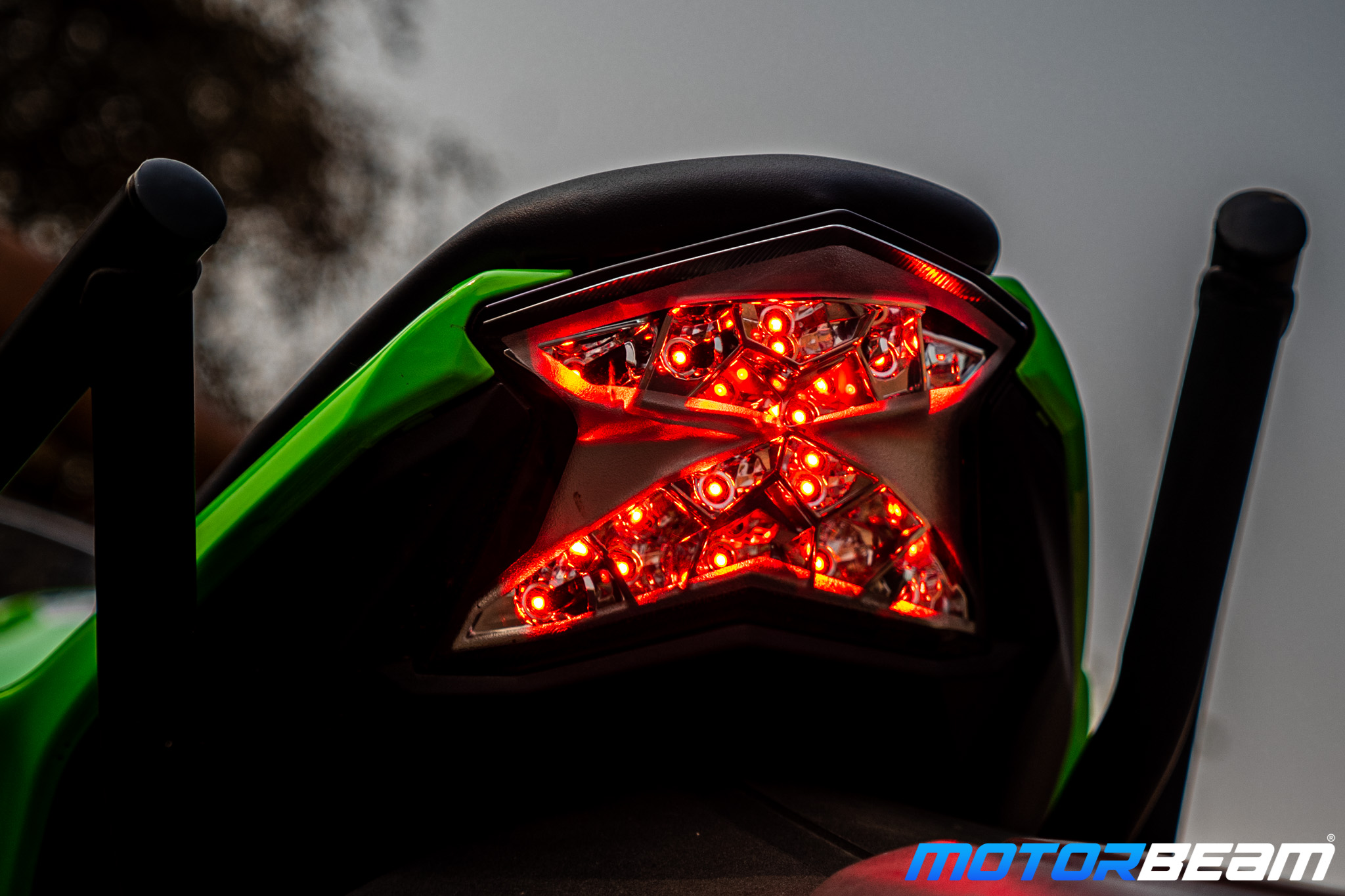2021 Kawasaki Ninja 650 Test Ride Review
Detailed test ride review of the latest 2021 Kawasaki Ninja 650.
Detailed test ride review of the latest 2021 Kawasaki Ninja 650.
Home » Bike News » Kawasaki Ninja 650 » 2021 Kawasaki Ninja 650 Test Ride Review
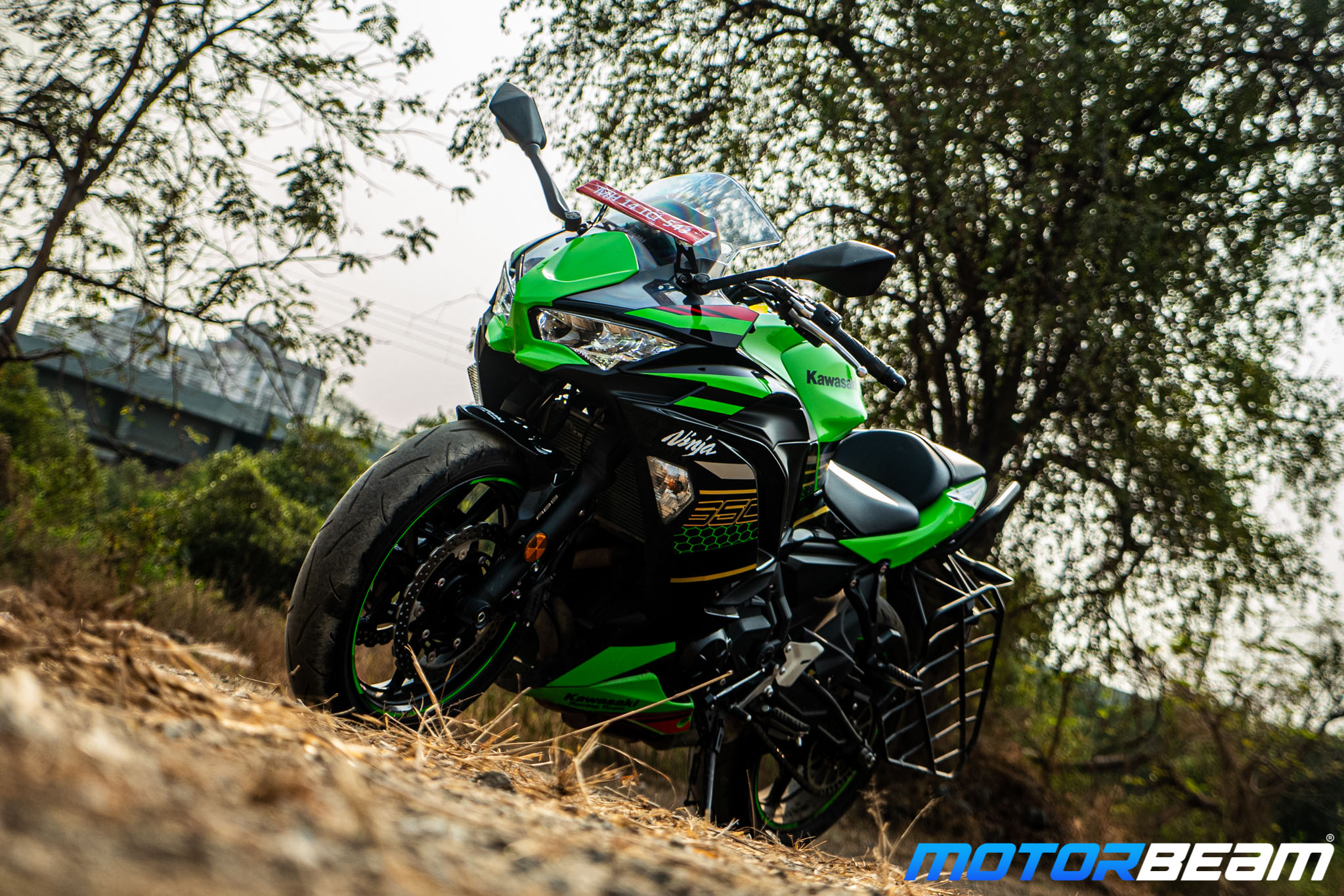
Bike tested: Kawasaki Ninja 650; Road Test No. 1310; Test Location: Mumbai
Price OTR Mumbai: Rs. 8,10,000/-
The Ninja 650 looks even better all thanks to the smart changes made to the design
The Ninja 650 is Kawasaki’s middle-weight sport-tourer. Throughout the span of its presence in India, the Ninja 650 has been quite popular and well perceived for its sharp looks and performance. The BS6 update brings in a facelift which makes the Ninja 650 fit in with its modern-looking siblings and of course, a lot of internal changes owing to BS6 emission norms. Changes are evident and so is the price bump. In our test of the 2021 Kawasaki Ninja 650, we find out the changes made to the motorcycle and answer the much-awaited question, “Could this be my first middle-weight superbike?”
Motor Quest: The Ninja 650 is the highest-selling 650cc Kawasaki bike in India. In 2011, Kawasaki in partnership with Bajaj launched the Ninja 650 in India for the first time. It is a popular choice among first-time middle-weight motorcycle buyers because of its performance and riding dynamics.
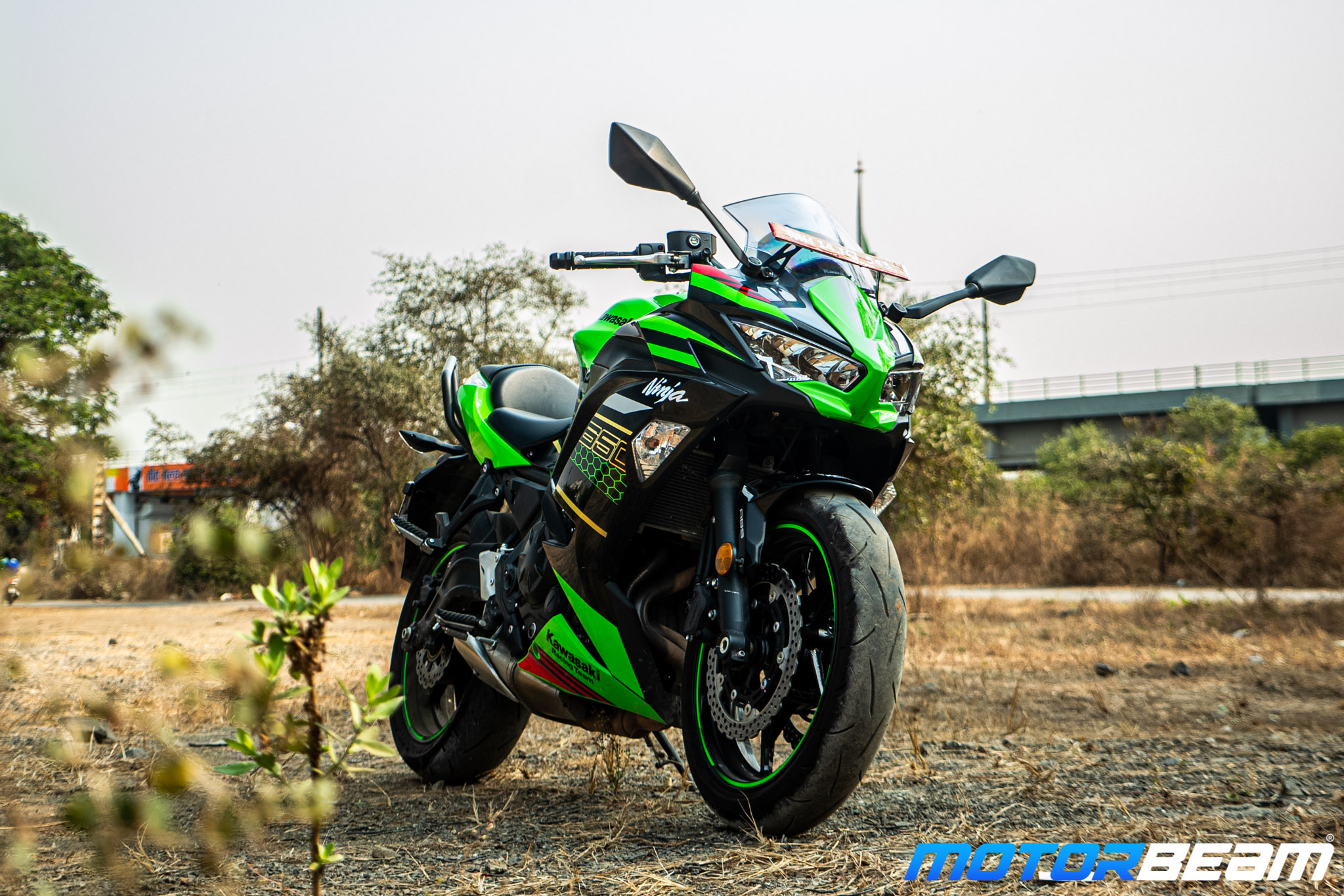
Styling: The Kawasaki Ninja is a stunning-looking motorcycle that attracts a lot of attention. The BS6 update does bring in a few styling changes that make the bike look more active but for the most part, the bike remains pretty much similar to the previous iteration. It now gets LED headlamps which are quite sharp and go well with the mean design of the bike. However, the indicators still continue to be halogen which doesn’t suit the overall modern appearance of the bike. The front visor has been scaled up and angled at a better, more aerodynamic angle. Meanwhile, the fairing has been also been updated with new Kawasaki Racing Team (KRT) graphics. Overall, the changes made to the styling give the bike a refreshed, more aggressive look.
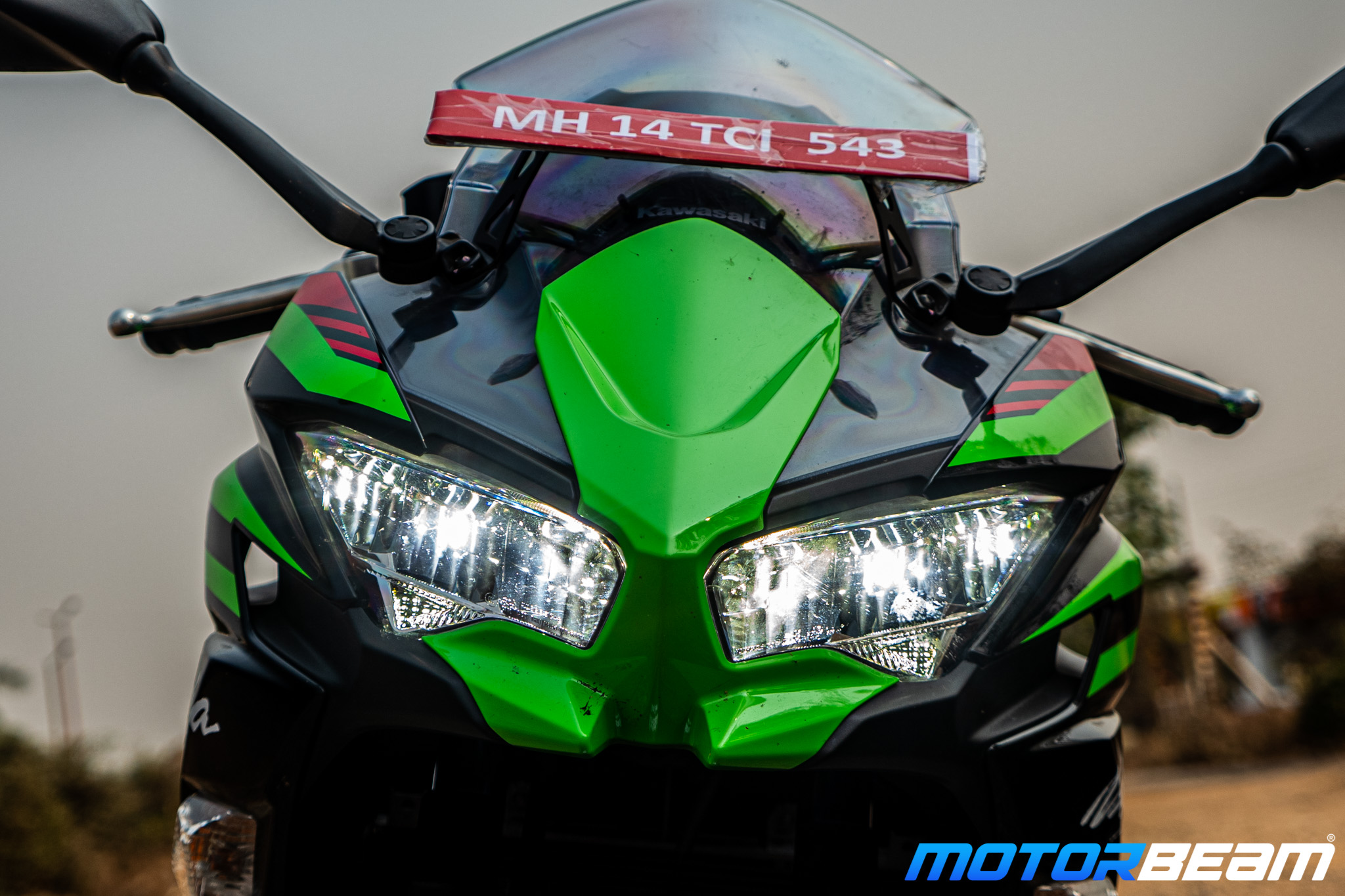
Everything on this bike is well built and the overall fit and finish of the bike is amazing
Kawasaki India offers the Ninja 650 in only one paint scheme while the international markets have 3 options, this doesn’t favour the Indian buyer. There are no changes made to the rear of the bike. The 2021 model gets a similar tail which looks very basic but offers decent mud protection. Also, the signature “X” shaped LED taillight remains the same which looks quite cool. The overall look of the bike is disgraced by the ugly looking rear grab handles and a barbeque grill like saree guard. Kawasaki should really improvise on these elements and come up with more thoughtful designs for the same.
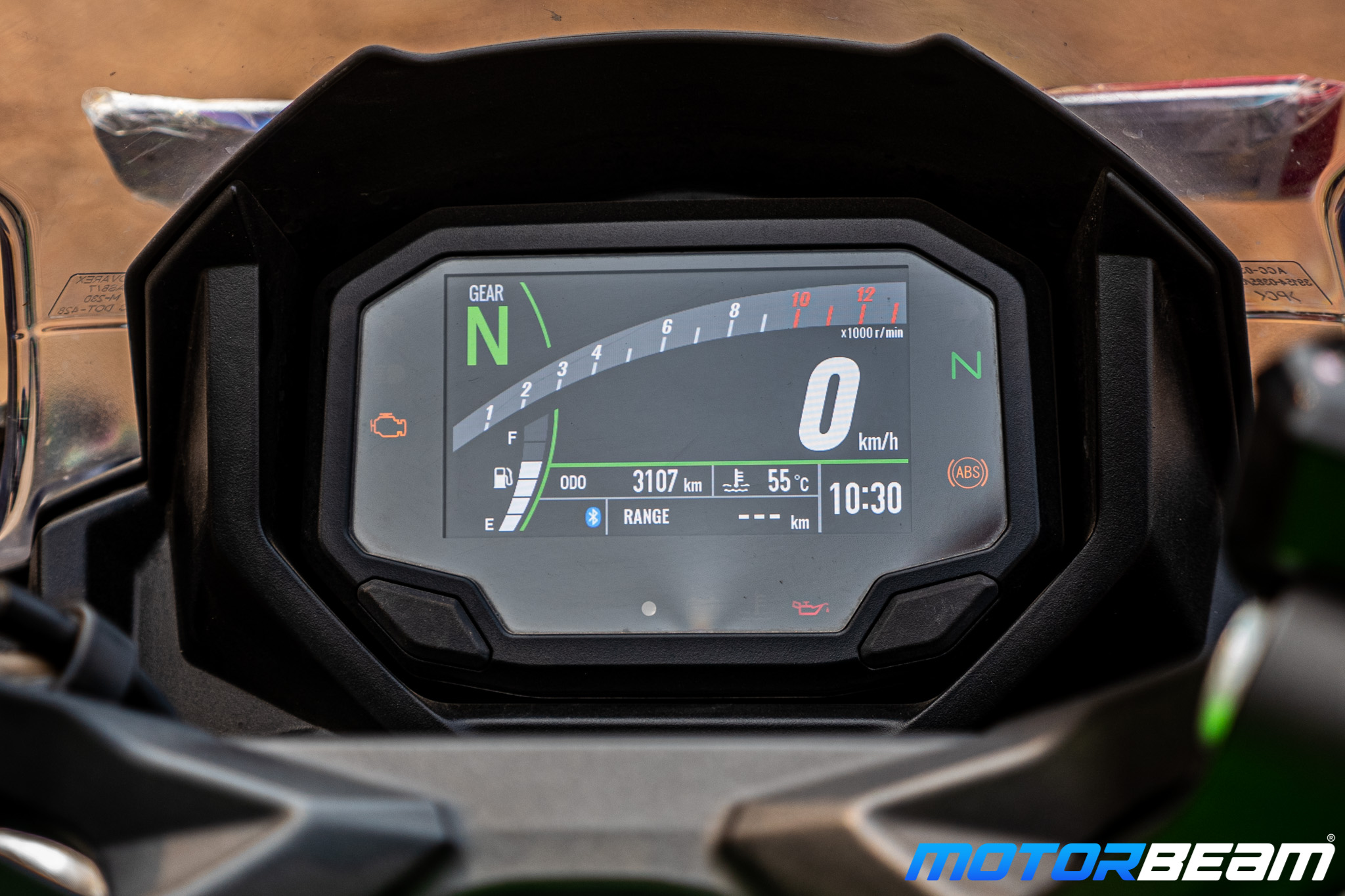
Instrument Cluster and Switchgear: The 2021 Ninja 650 gets a revised 4.3-inch TFT instrument cluster with better Bluetooth connectivity. It hosts a lot of information like range, live mileage, engine temperature and all the other basic bits. This TFT display is crisp and bright and overall readability is pretty good indeed. Smartphone pairing works through the Kawasaki Rideology app but, the pairing process is quite cumbersome. Not only does the mobile app shows all the ride-telemetry data but also the last location of the bike which is a nice safety feature. However, there is no navigation on offer and, given the fact that this is a sport-touring machine, it is quite shocking.
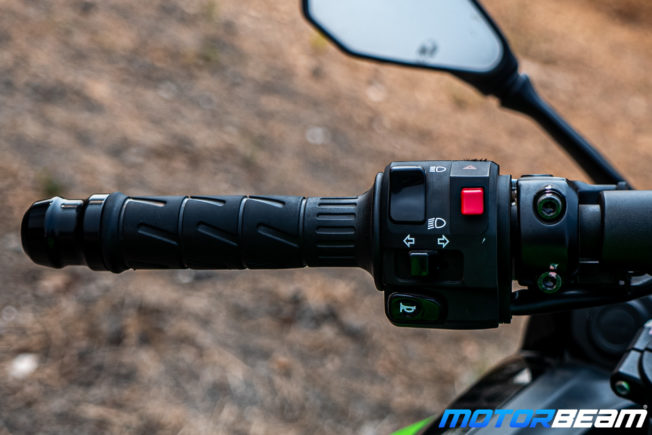
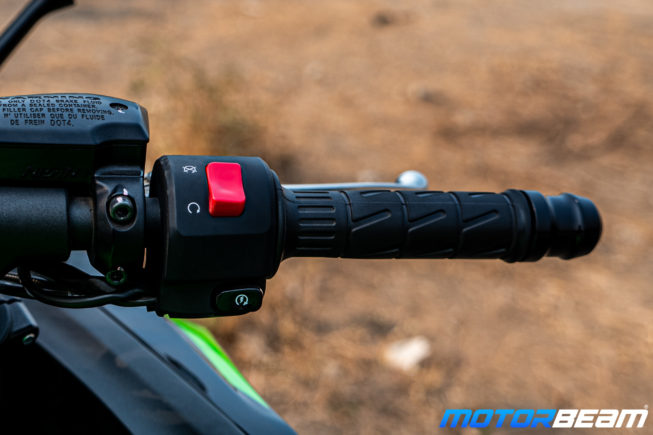
The TFT cluster on the Kawasaki Ninja 650 has a black background, yet it is easy to read in bright daylight
The switchgear on the 2021 model remains the same as before. The left switchgear has all the basic sets of switches along with a hazard light switch. While the right switchgear gets a kill switch and a starter button. The switchgear offers nice tactile feedback. However, a set of directional buttons to toggle through the instrument cluster should have been offered. The quality of the switchgear in modern Kawasaki motorcycles has always been excellent and so is the case with the 2021 Ninja 650.
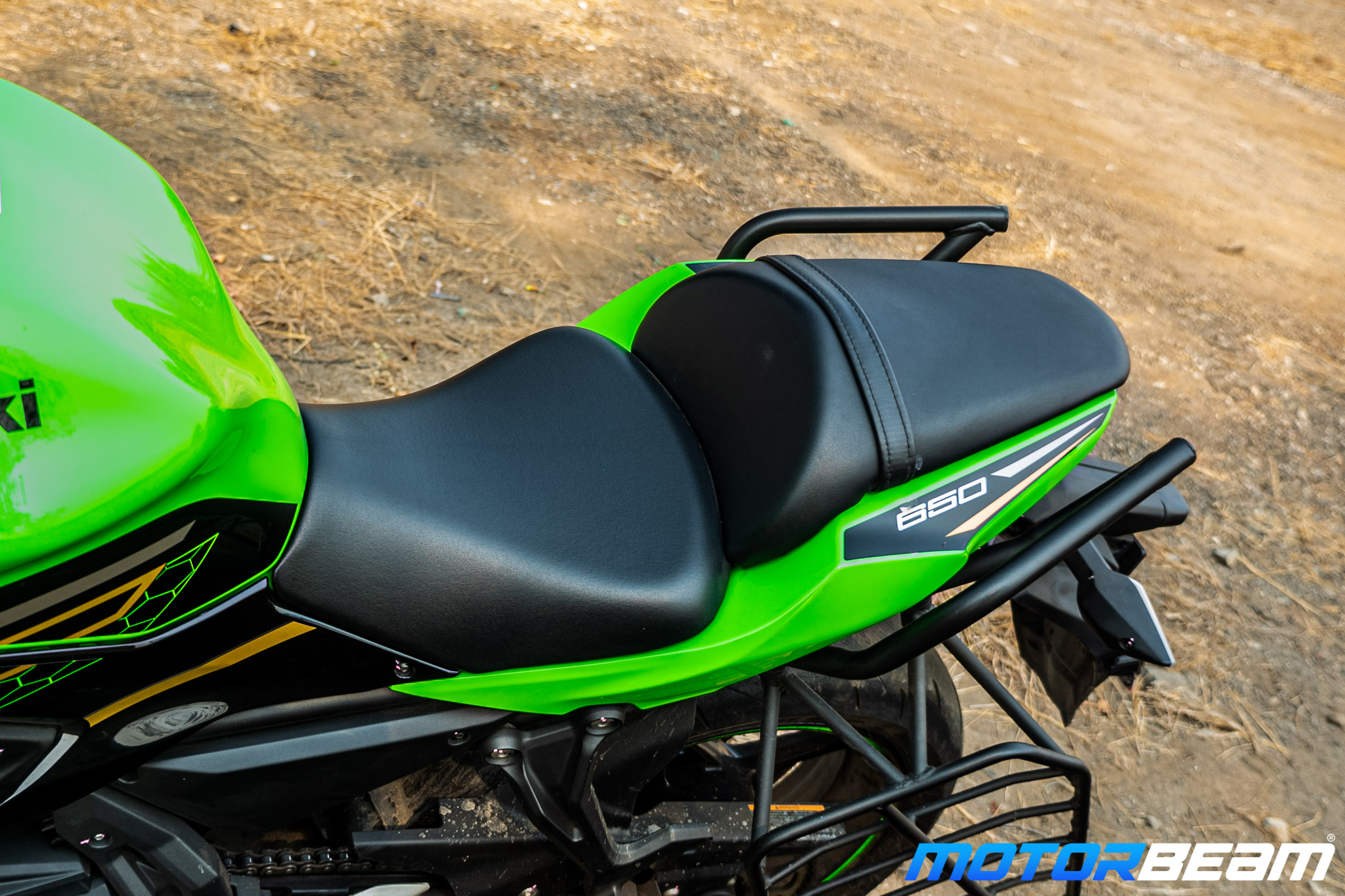
Ergonomics: In terms of ergonomics, the Kawasaki Ninja 650 remains similar to its predecessor. Raised clip-on handlebar and slightly rear-set footpegs translate to a comfortable seating posture which is apt for day to day usage as well as long-distance touring. The seat height is 790 mm which makes the Ninja 650 a very accessible bike for tall as well as short riders. Adding to that, cushioning on the seat is balanced for the long haul as well as some city trips too. Adjustable levers add to the overall accessibility factor. The mirrors offer a decent view of what’s behind but they stick out quite a lot which could pose a problem while filtering through traffic. Overall, the Ninja 650 offers comfortable ergonomics.
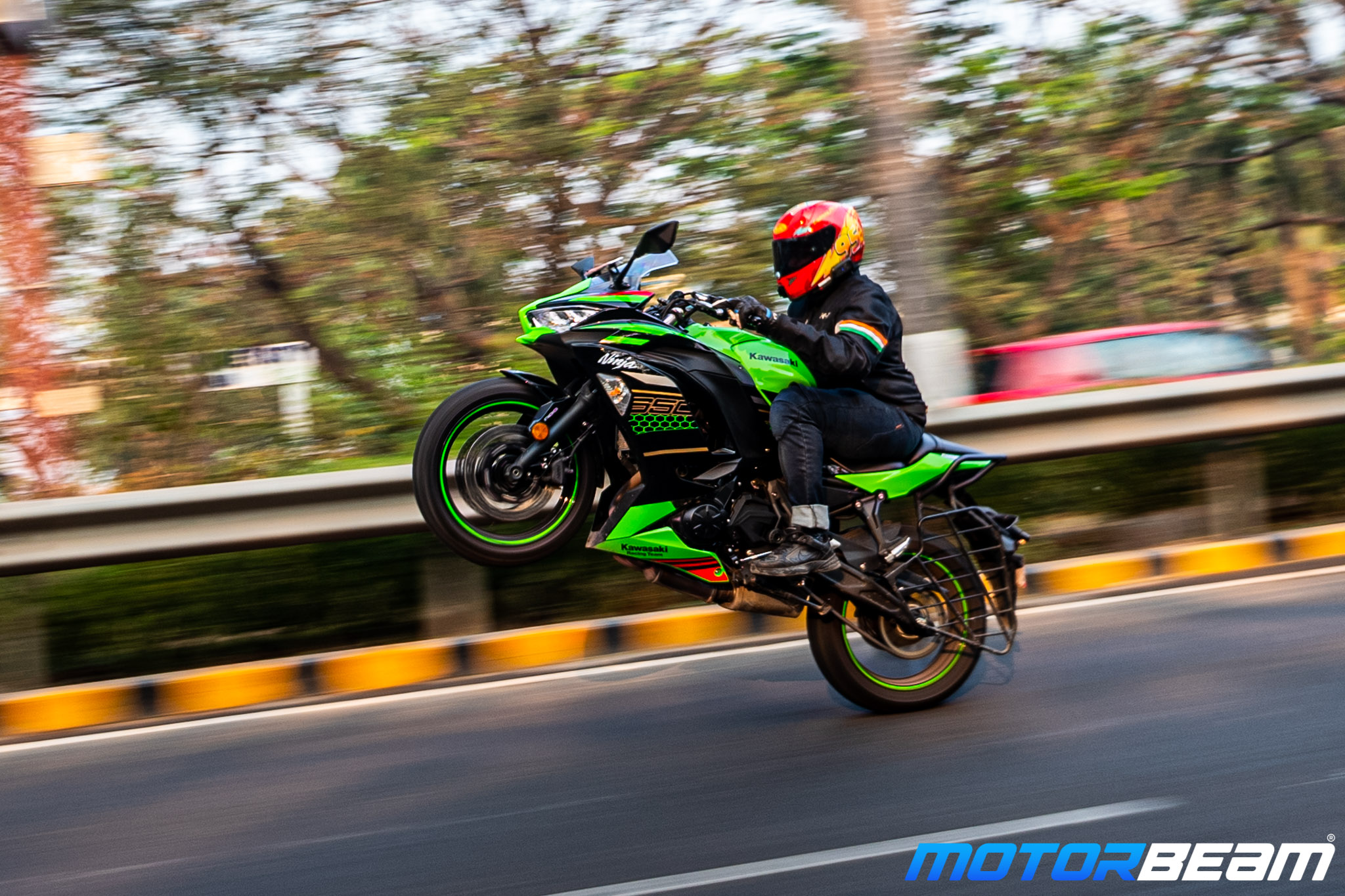
Performance: The power plant of the Ninja 650 is the same 649cc liquid-cooled parallel-twin that churns out 68 PS of peak power at 8000 RPM which is the same as before. However, the torque has dropped by 1.7 Nm and now you get 64 Nm of max torque at 6700 RPM. On paper, these numbers look good and the difference isn’t much but, in real-life conditions, the motor feels a lot calmer than before and the instant surge which was there on the previous models has completely vanished. The 6-speed gearbox is slick-shifting, the slipper clutch is well-weighted too which results in neat shifts every time.
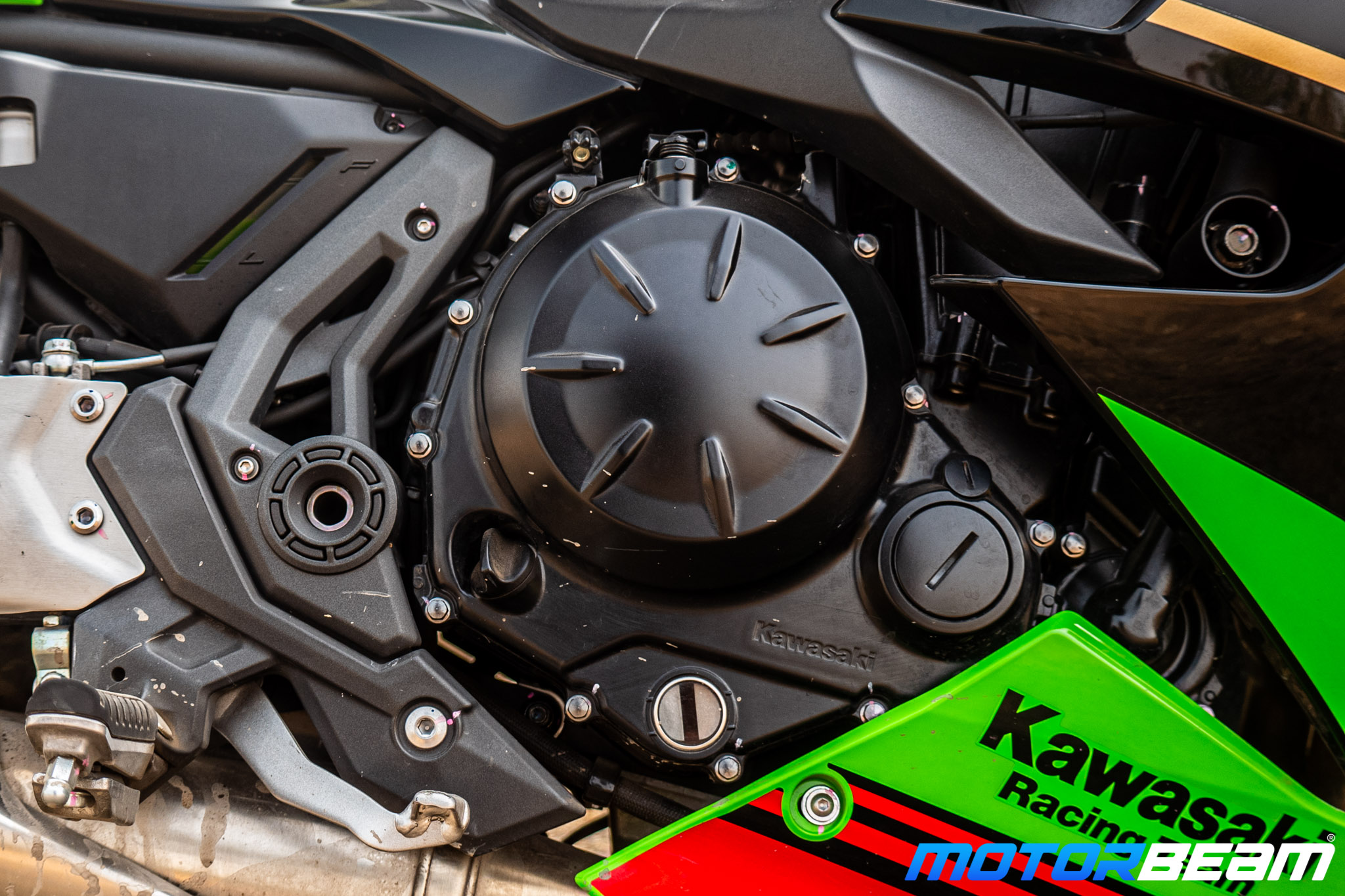
The bike pulls effortless in every scenario, the power distribution is very well laid out
The low-end pull is quite strong and the bike excels in mid-range acceleration while the top end is no less. Power delivery is fairly spread throughout the rev band and you can ride this bike in a higher gear at low RPMs without any issue. 0-100 km/hr pull takes 4.57 seconds and the motor tops out at 197 km/hr. The performance is quite commendable and the Ninja 650 is the fastest 650 from Kawasaki. However, buzzing vibrations start kicking in at 5500 RPM and get stronger as the revs increase and can be felt in and around the seat. During our time with the Ninja 650, we got an average fuel economy of 20 km/l which gives the Ninja a tank range of 300 km from the 15-litre fuel tank.
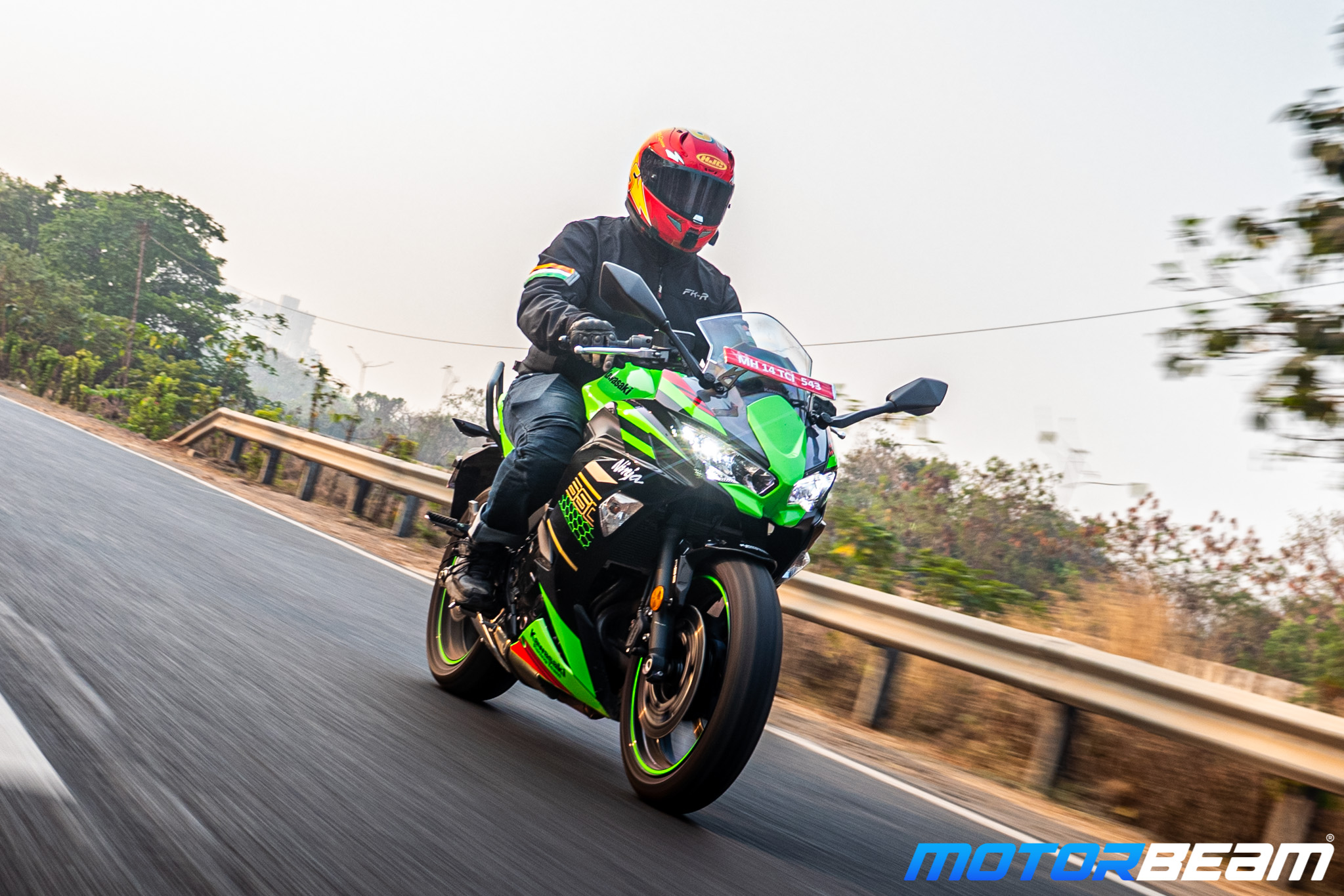
Riding Dynamics: The front suspension is a conventional non-adjustable 41 mm telescopic unit while the rear is a preload-adjustable mono-shock this combination results in a soft, comfortable ride. However, at this price point, we expect USD forks that are shockingly missing. Also, the rear suspension has a bounce-back effect that trades away comfort. The handlebar feels well connected and offers good feedback. This bike loves being tipped into corners and this is where you will notice how potent this chassis is! It offers excellent straight-line stability and offers the right amount of flex as well. The Dunlop rubber offers a remarkable grip throughout corners and inspires a lot of confidence.
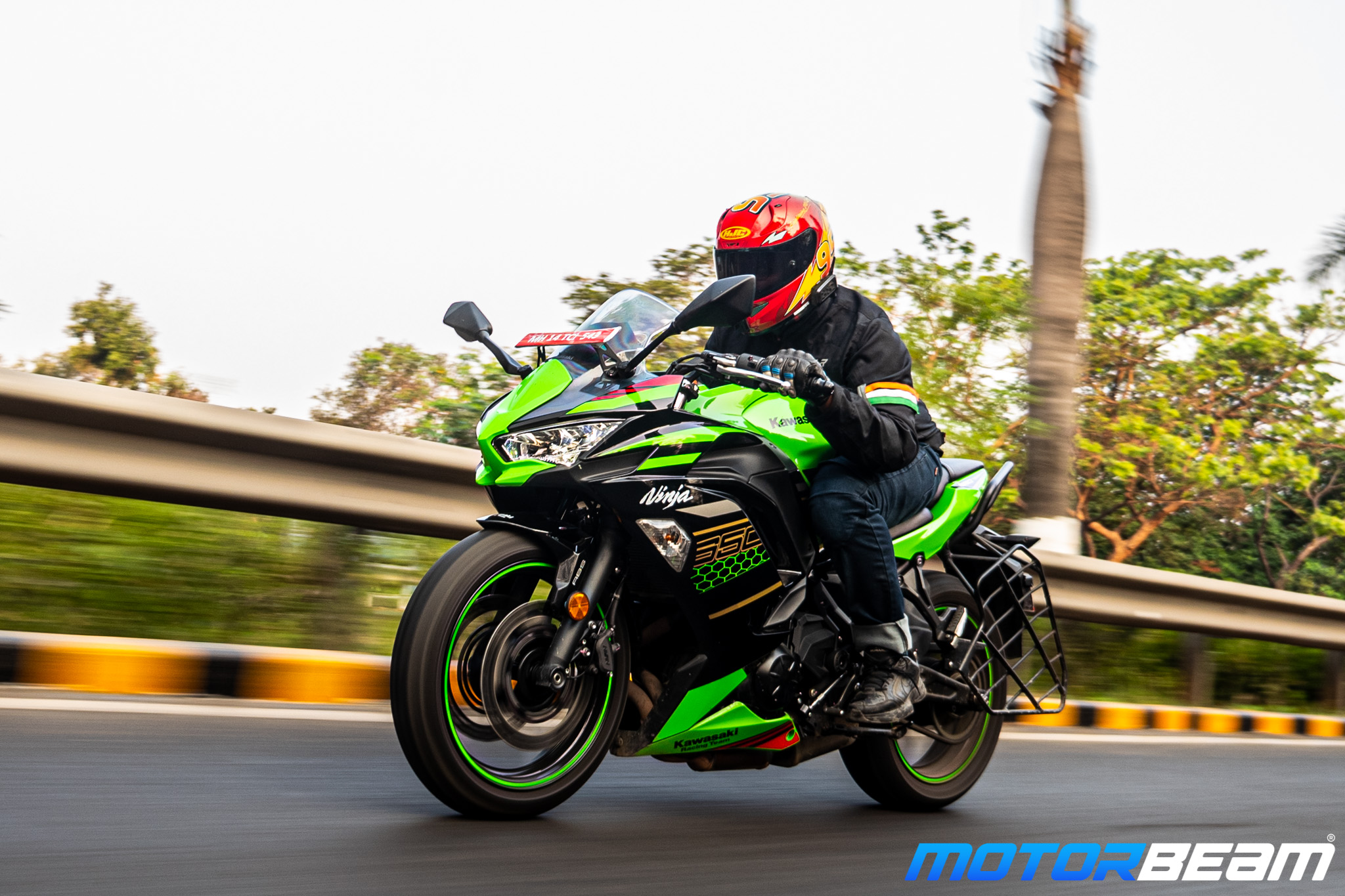
The Ninja always brings a smile to your face every time you ride it and leaves you wanting for more
The aero department of the Ninja 650 does its job fairly well. The visor offers good wind protection and the air curtains on the fairing do a good job of curtailing drag. Overall, this bike is pretty easy to manoeuvre and feels nimble despite its 196 kg weight. Talking about the brakes, they have immense stopping power as the Ninja 650 packs dual 300 mm petal discs up front and a 220 mm disc at the rear powered by Nissin callipers. However, we feel that Kawasaki could have done a better job with ABS calibration as the system feels too intrusive especially on bad roads. This bike has a mediocre ground clearance of just 130 mm which is just about okay for solo riding but, with a pillion, you have to be extra careful or you might scrape the belly quite sometimes.
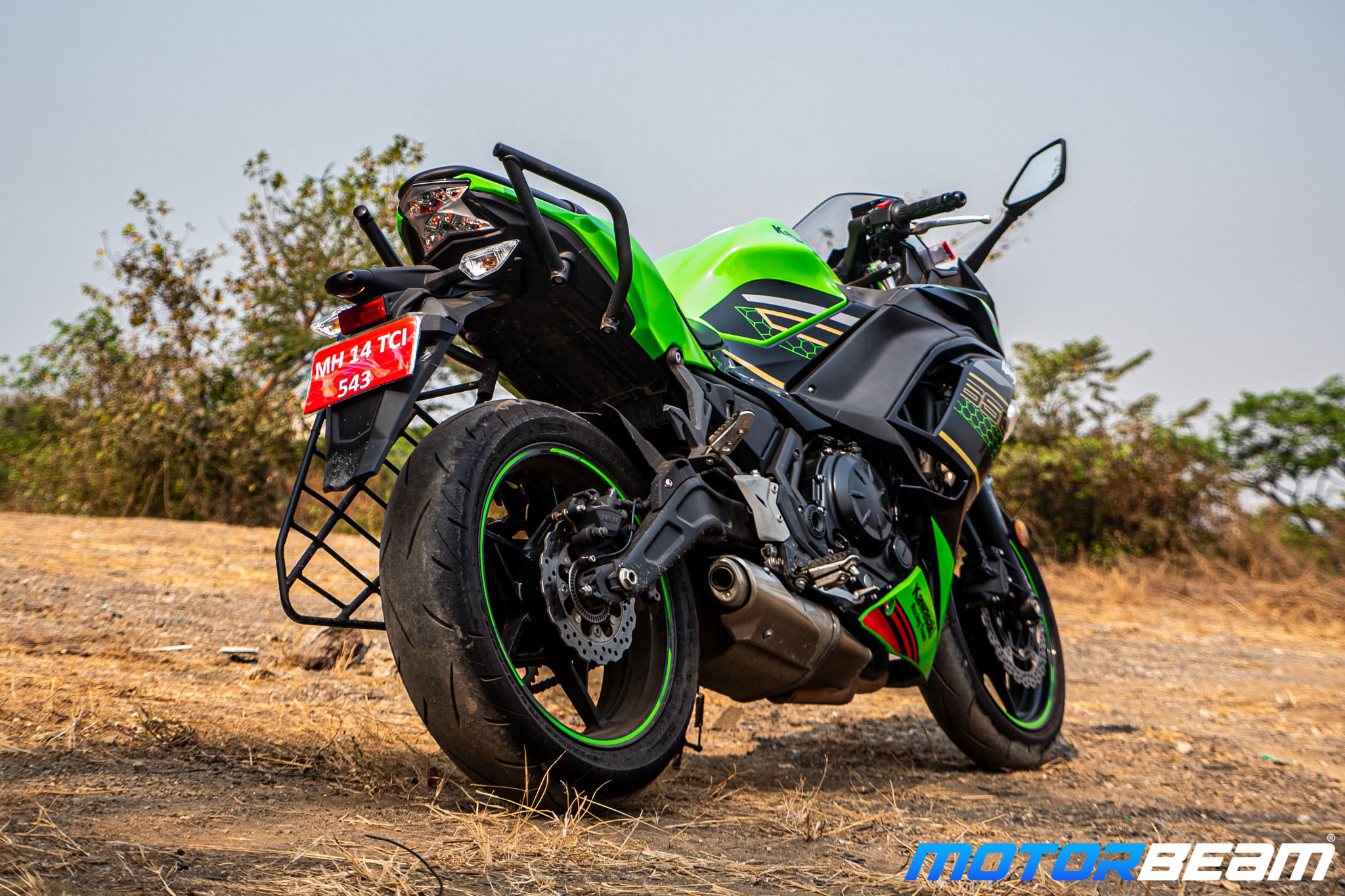
Verdict: At Rs. 8,10,000 /- (on-road, Mumbai), the Kawasaki Ninja 650 poses as a very appealing offer for anyone who wants an upgrade. This bike makes a lot more sense now. The Ninja 650 like all other Kawasakis, is built to last the test of time and can be passed on for generations. However, Kawasaki’s dealer and service network is something to look out for. If you want to enter the world of big-faired superbikes, this is your entry ticket to the glorious world of superbikes.
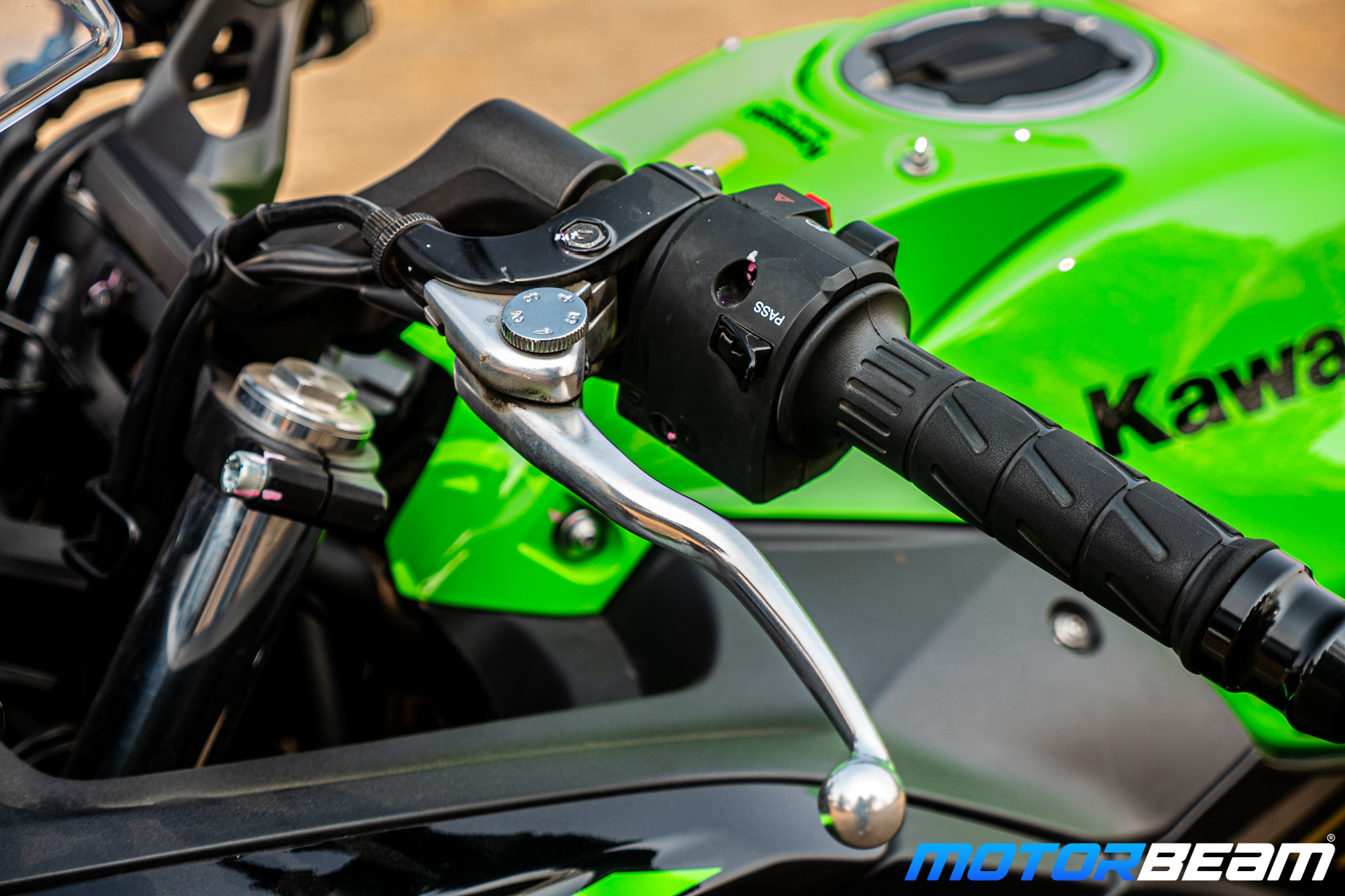
What’s Cool
* Phenomenal mid-range performance
* Touring capabilities with a decent tank range of 300 kms
* Braking performance is impressive with forgiving dynamics
What’s Not So Cool
* Lack of a Traction Control System
* Ugly looking saree guard and grab rails
* Lack of an integrated navigation system
* Engine: 649cc, Parallel-Twin, Liquid-Cooled
* Power: 67.3 BHP @ 8000 RPM
* Torque: 64 Nm @ 6700 RPM
* Transmission: 6-Speed
* Top Speed: 197 km/hr (VBOX)
* Fuel Consumption: 20 km/l
* Fuel Type: Petrol
* Suspension: 41 mm Telescopic Forks (Front), Adjustable Monoshock (Rear)
* Tyres: 120/70/17 (Front), 160/60/17 (Rear)
* Brakes: 300 mm Dual-Disc (Front), 220 mm Disc (Rear)
* Length x Width x Height (mm): 2115 mm X 740 mm X 1415 mm
* Wheelbase: 1410 mm
* Seat Height: 790 mm
* Ground Clearance: 130 mm
* Fuel Tank Capacity: 15-litres
* Kerb weight: 196 kgs
